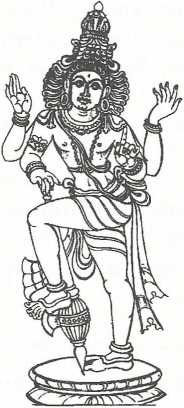Dvārapālas or dvārapālakas
From Hindupedia, the Hindu Encyclopedia
By Swami Harshananda
Dvārapālas or dvārapālakas literally means ‘guardians of doors’.
All the temples built in the traditional style have dvārapālas or door guardians generally at the sides of the main doorway of the sanctum. Their iconographic details vary according to the sectarian affiliation of the temple:
Dvārapālas in Vaiṣṇava Temple[edit]
In Vaiṣṇava temples there are three pairs of dvārapālas:
- Caṇḍa and Pracaṇḍa at the sides of the temple
- Jaya and Vijaya at the sides of the sanctum in the ardhamaṇḍapa
- Purṇa and Puṣkara at the outside enclosure
Sometimes Nanda and Sunanda and Kumuda and Kumudākṣa are also mentioned as dvārapālas. There are some other deities also, who function as guardians. For instance with raised trunks or holding a lotus in adoration.
One of the well-known figures of the dvārapālas is in the stone relief of the Varāhamaṇḍapa at Māmallāpuram[1] near Chennai or Madras.
References[edit]
- ↑ Māmallāpuram is famous as Mahābalipuram.
- The Concise Encyclopedia of Hinduism, Swami Harshananda, Ram Krishna Math, Bangalore

